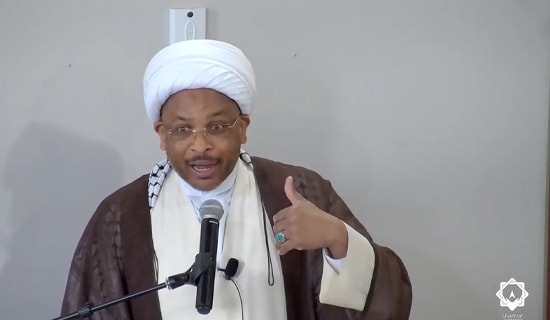Under the joint auspices of the United Nations Development Programme (UNDP) and the Arab Fund for Economic and Social Development a recently published report, Arab Human Development Report 2002 (Creating Opportunities for Future Generations), diagnosed human development in 22 Arab countries in a forthcoming and even blunt manner.[1]
Methodology and Main Findings
The UNDP has customarily measured the Human Development Index (HDI) in terms of four variables: life expectancy, adult literacy, education enrollment ratios and gross domestic product per capita.[2] This report transcends the UNDP's traditional criteria and measures human development in terms of three deficits: the freedom deficit, the women's empowerment deficit, and the human capabilities/knowledge deficit relative to income.[3]
I. The Freedom Deficit
While, admittedly, freedom as a concept is difficult to quantify, using measurement criteria applied across the world, the authors of the report have concluded that the Arab countries score the lowest on the freedom index, lower even than sub-Saharan Africa. These criteria, or indicators, measure various aspects of the political process, civil liberties, political rights and independence of the media. Data also show that the Arab region "has the lowest value of all regions of the world for voice and accountability."[4]
II. The Women's Empowerment Deficit
While women have made progress in terms of primary education, they score poorly on the empowerment index largely because they have very limited involvement in the political process, ranking a notch higher than the status of women in sub-Saharan Africa who remain at the bottom of the scale. While women represent 50% of the population, their membership in Arab parliaments is only 3.5%. Another dimension of the empowerment deficit is the low level of educational attainment as measured by the high rate of illiteracy which places the Arab countries at the bottom of the scale. The report estimates that about 65 million Arabs out of a total population of about 280 million are illiterate; two thirds of them are women.[5]
III. The Human Capabilities/Knowledge Deficit Relative to Income
The report underscores the relatively weak and poorly utilized human capabilities in the region, due to poor educational systems and the high rate of illiteracy mentioned in the previous paragraph. Poor education means poor access to knowledge acquisition. The report uses the number of Internet hosts per 1,000 people as one proxy for access to knowledge. The report concludes that the Arab countries have the lowest level of access to Information and Communication Technology (ICT) even lower than sub-Saharan Africa.[6] The report attributes the poor access to ICT to the absence of national information policies that "delineate targets and priorities, coordinate the various sectors and formulate strategic alternatives with regard to the creation of infrastructure and the development of human and information resources."[7]
Another aspect of poor access to knowledge is the low rate of Research and Development (R&D) funding. R&D expenditures as a percentage of GDP were a mere 0.4% for the Arab world in 1996, compared to 1.26% in 1995 for Cuba, 2.35% in 1994 for Israel, and 2.9% for Japan.[8]
The report also addresses the situation of the youth as a subset of knowledge acquisition. Based on surveys conducted in a number of countries, 51% of older youths expressed a desire to emigrate to other countries, as a measure of "their dissatisfaction with current conditions and future prospects in their home countries." Hence, "the mismatch between aspirations and their fulfillment has in some cases led to alienation, apathy and discontent."[9]
These findings led Dr. Rima Khalaf, UNDP Assistant Administrator and Director of the Regional Bureau of Arab States, to warn that "if these deficits persist, the Arabs will not be able to make it."[10] It is hardly surprising that the report received "lukewarm" reception in the Egyptian media because, "either the press is not free, or... the report is not interesting enough."[11]
Economic Growth Issues
GDP in all Arab states combined was $531.2 billion in 1999—less than that of a single European country (Spain's for example was $595.5 billion). Over the period 1975-1998, real GDP in the Arab world rose from $256.7 billion in 1975 to $445.7 billion in 1998 in constant prices. However, the report shows sharp fluctuations in the growth pattern by sub-period—8.6% between 1975 and1980; 0.7% between 1982 and 1990; and 3.8% between 1990 and 1998. Much of these fluctuations reflect mainly movements in the oil market on which the Arab world depends.[12]
When population growth is taken into consideration, the real per capita income for the period 1975-1998 as a whole grew very slowly, by around 0.5% per annum—"in effect, a situation of quasi-stagnation."[13] A Lebanese economist, Samir Sabah, writing in the London Arabic daily Al-Hayat, says that at this average growth rate, an Arab citizen could expect to double his GDP per capita in 140 years [statistically, it is 144 years!][14] In agriculture, cultivated land has declined from 0.40 hectare per person in 1970 to 0.24 hectare in 1998.[15]
"Critical macro variables," the report asserts, "are still underperforming, including employment, savings, productivity, and non-oil exports. At about 15%, average unemployment across Arab countries is among the highest rates in the developing world." Moreover, "trade performance has remained sluggish and the region is still relatively closed. In some countries, tariffs are high and non-tariff barriers remain important."[16]
The report draws on data from the United Nations Industrial Development Organization (UNIDO) to show that industrial labor productivity was estimated in 1990 to be roughly the same as in 1970 "when it has been close to European and Japanese levels." The report reaches the inescapable conclusion that "in the face of rising productivity elsewhere, this has meant a significant decline."[17]
Concomitant with the overall underperformance of macroeconomic variables has been the falling capacity of the state to foster rapid growth as well as to meet the demands of human development in key areas such as health and education. However, as capacity has declined, "government spending as a percentage of gross domestic product is higher than in other developing regions."[18]
The Israeli Dimension
While the report excludes Israel from its analysis it does not spare this country from severe criticism because of its "illegal occupation of Arab lands."[19] It attributes all political, social, and economic dysfunctions in the Arab world to the occupation of the West Bank and Gaza. The report asserts that "occupation casts a pall across the political and economic life of the entire region." With no empirical evidence or supporting data the report concludes that "in all these ways, occupation freezes growth, prosperity and freedom in the Arab world." [Italics added.][20]
For reasons of their own, the authors of the reports disregarded two of the most recent destabilizing events in the Middle East in the last two decades with lingering and destabilizing effects to the present day. One is the Iraq-Iran war and the other is the invasion of Kuwait by its northern neighbor." It is hard to believe that poverty in oil-rich Saudi Arabia is the result of the occupation of the West Bank and Gaza. Just a few days ago, the daily Al-Quds Al-Arabi tells the story of the poor people in Riyadh, the political capital of Saudi Arabia, who wait outside the palaces of the princes for the hope of a few drops of clean drinking water dripping from their faucets. [21]
SUPPORT OUR WORK

Conclusion
Human development was defined in the report as "a process of enlarging choice."[22] However, the report, prepared by Arab academicians, portrays a picture of human development where the choices in many vital areas such as health, education, gender inequality and most importantly, political participation and governance, are not expanding fast enough and, in some areas and in comparison with other regions of the world, they are contracting. In the words of the Kuwaiti daily Al Watan's editorial about the report, "The United Nations: The Arabs live in the dark ages."[23] The lead author of the report put it best: "A person who is not free is poor. A woman who is not empowered is poor. And a person who has no access to knowledge is poor."[24]
Attachment: Cartoon from the daily Al-Hayat
*Dr. Nimrod Raphaeli is Senior Analyst of MEMRI's Middle East Economic Studies Program.
[1] The 22 countries covered in the report equal the number the member countries in the Arab League.
[10] Al-Ahram Weekly On-Line, July 11-17, 2002.
[11] "A person who is not free is poor," Al-Ahram Weekly Online, July 11-17, 2002.
[21] Al-Quds Al-Arabi, July 16, 2002.
[22] Report, p.15. This is of course not a new idea. Back in the 1950s Sir Arthur Lewis, the famous economist and Nobel Laureate characterized the difference between rich and the poor not in their degree of happiness but in the number of choices the one has and the other has not.
[24] Nader Fergany, lead author of the Arab Human Development Report (2002) in an interview with Al-Ahram Weekly On-Line, 11-17 July, 2002.




